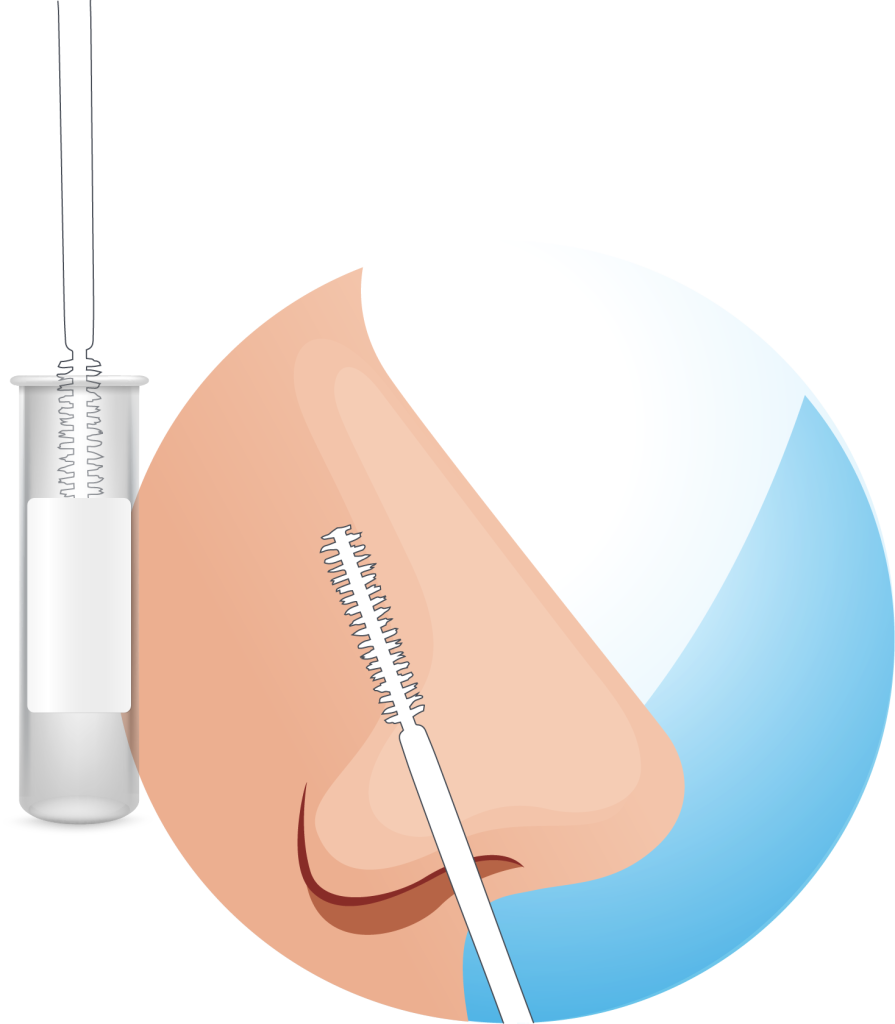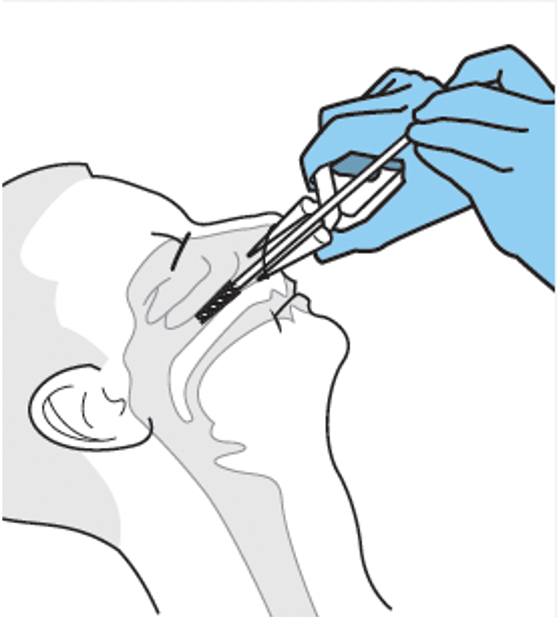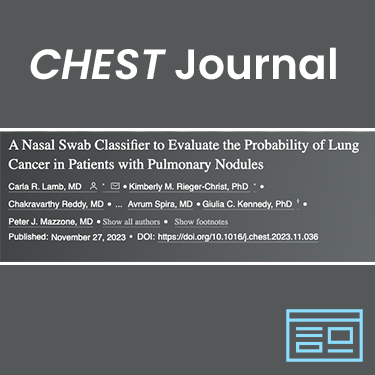Percepta® Nasal Swab
PERCEPTA® NASAL SWAB
What is the test?
Objective tools are needed to assess the risk of lung cancer in patients with detected lung nodules
What is Percepta Nasal Swab?
It is a first-of-its-kind, office-based genomic test that objectively classifies lung cancer risk in an identified lung nodule of patients that are ever-smokers. The test result can provide guidance on which patients can safely avoid unnecessary invasive procedures or undergo further workup to confirm their diagnosis.
Percepta Nasal Swab uses a simple and convenient nasal brushing to objectively evaluate suspicious lung nodules

~44%
of low-risk patients underwent an invasive procedure to evaluate a lung nodule that was found to be benign.2
~50%
of lung cancer patients receive 2 or more biopsies, delaying the time to diagnosis.3
Sample collection

A simple nasal swab brushing just past the inferior nasal turbinate is used to collect a sample, which is sent to Veracyte.
Test results
Low risk
Monitor with low dose CT
Moderate risk
Consider non-surgical tissue sampling inclusive of bronchoscopy
High risk
Consider sending patients for direct surgery and/or treatment
Percepta Nasal Swab Evidence

Dec 2023 | PUBLICATION
A Nasal Swab Classifier to Evaluate the Probability of Lung Cancer in Patients with Pulmonary Nodules
Carla Lamb, MD, Kim Rieger-Christ, PhD., et al.
CHEST Journal
The Percepta Nasal Swab test determines lung cancer risk of malignancy with high accuracy in individuals who smoke or previously smoked and have a pulmonary nodule. In a study of 312 patients, the classifier identified patients as low risk for cancer with a 97% sensitivity while identifying high risk patients with a 92% specificity. Performance was maintained across lung cancer sub-types, lung nodule size, and degrees of smoking exposure. Classifier guided decision making could lead to fewer diagnostic procedures in patients without cancer and more timely treatment in patients with lung cancer.
